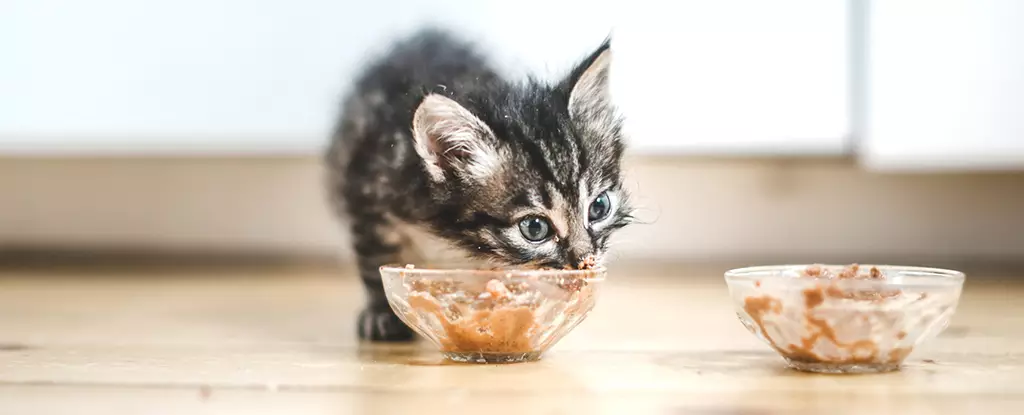The recent emergence of bird flu cases among domestic cats in Los Angeles County has raised alarms among pet owners and veterinarians alike. As the H5N1 virus continues to evolve and affect various species, its implications on household pets are becoming increasingly concerning. This article aims to delve into the recent incidents involving feline fatalities due to H5N1, analyze the path of transmission, and discuss vital preventative measures for pet owners.
At least six cats in Los Angeles County have succumbed to the deadly effects of the H5N1 bird flu virus, with several others experiencing severe illness. These outbreaks underscore a troubling trend, particularly for families relying on raw food diets for their pets. A tragic case involving a five-cat household resulted in the deaths of two kitties after consuming commercially available raw pet food that tested positive for the H5N1 virus.
With all members of this particular feline family being strictly indoor cats, the immediate correlation between their diet and potential exposure to the virus was undeniable. Rapid onset of symptoms characterized by respiratory distress was reported among four of these cats, while the fifth showcased only milder indicators. Unfortunately, the severity of the condition led veterinarians to deem euthanasia as the only compassionate option for two of the afflicted cats.
Investigations into the causes of infection revealed that specific brands of raw pet food, such as ‘Monarch Raw Pet Food’ sold at farmers markets, were harboring the live H5N1 virus. This alarming find highlights the inherent risks of feeding pets raw diets, which have become increasingly popular in recent years. Although proponents argue that raw food diets mirror an animal’s ancestral eating habits, safety concerns associated with pathogens are significant.
A similar situation unfolded when a single-cat household presented their pet for acute illness treatment. Like the previous case, this cat was also indoors and had consumed different brands of raw pet food. These occurrences compel pet owners to reconsider the nutritional practices applied to their animals, especially in light of the associated health risks.
Notably, five additional felines from separate households succumbed after ingesting raw milk linked to a recall due to H5N1 contamination. This segment of the outbreak emphasizes the potential dangers posed by contaminated food and drink intended for human consumption. The situation raises broader questions about the food supply chain and the responsibilities of manufacturers to prevent outbreaks through stringent safety measures.
The rare instances of H5N1 in domestic cats not only devastate families but also pose a more significant risk regarding the mutation and transmission of this virus across various species. Current assessments show that domestic cats are not usually carriers of Influenza A; however, the recent cluster of infections serves as a warning.
Despite the gravity of the situation, LACDPH confirmed that there is no evidence of local transmission from cat to cat, or between species to humans. Nevertheless, the potential for future mutations leading to transmission cannot be entirely disregarded. The information suggests a low risk to the general public, but those in intimate contact with potentially infected animals must be vigilant.
In the broader context, H5N1 has primarily affected avian populations but has also been detected in other livestock around the globe, prompting heightened vigilance from health authorities. With 66 confirmed human cases of H5N1 within the United States, awareness becomes paramount. The single reported fatality underscores the virus’s ability to cross species lines, raising concerns about its impact on public health.
In light of these recent events, pet owners should adopt several precautionary practices to protect their feline companions. Key guidelines include avoiding raw meat, dairy, and pet food diets that may expose animals to harmful pathogens. Regularly monitoring food recalls and disseminating this information within the pet owner community can help mitigate risks.
Additionally, owners should be proactive in recognizing potential symptoms of H5N1 in their pets. Important signs to look for include fever, lethargy, loss of appetite, jaundice (yellowing of the skin or eyes), respiratory distress, and any neurological abnormalities. Being aware of these indicators can facilitate early interventions and potentially save lives.
The intersection of raw pet diets and avian viruses presents a complex challenge for pet owners. The recent H5N1 incidents in domestic cats serve as a crucial reminder of the importance of responsible pet ownership, particularly regarding dietary choices. Awareness and preventive measures can help safeguard beloved pets against emerging health threats, preserving the joy they bring to our lives.

Leave a Reply